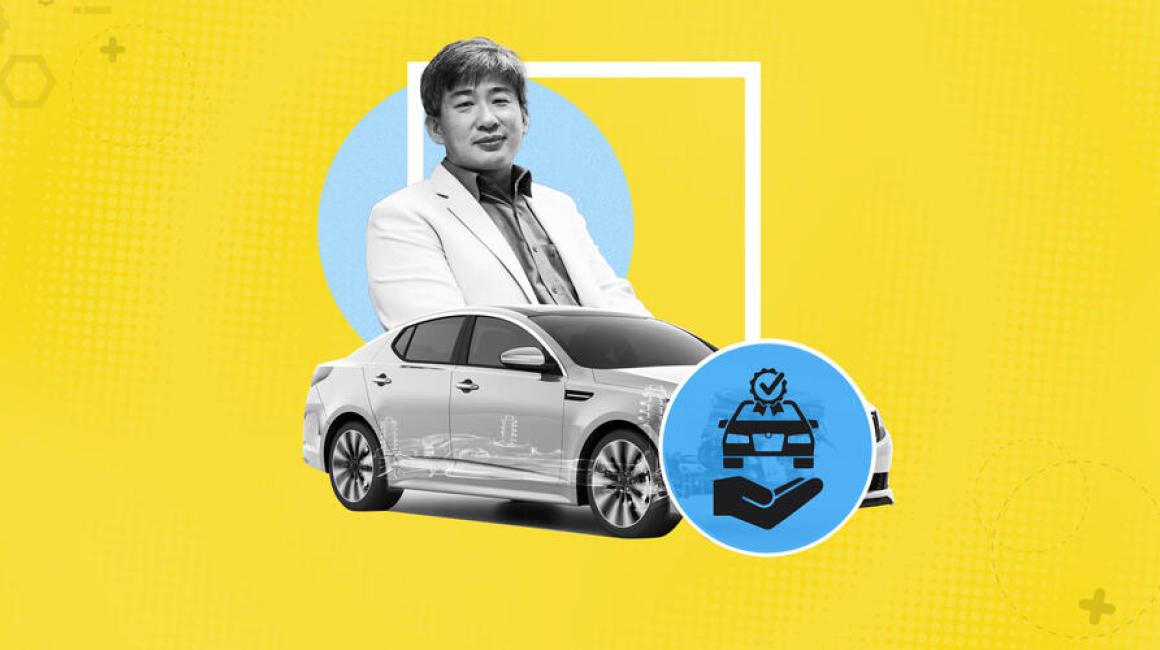
Some car warranties are three-year/36,000 miles. Others are five-year/60,000 miles. There are even a few that go as high as 10-year/100,000 miles.
Working in the automotive service industry prior to his academic career, Decision Sciences Assistant Professor Wayne Fu wondered why.
“The first thing I’d do is check the warranty to see what was covered — because of how warranties are structured, every transaction was different. It could get a bit complicated, almost like they were testing our intelligence,” said the College of Business faculty member. “I was curious why there wasn’t a standard coverage across the industry. Did it have to do with quality, psychology or something else? And if companies offered longer warranties, would it translate to more sales?”

Today — after a decade of research — he has some answers: And those findings were recently published in Manufacturing & Service Operations Management, which is on the Financial Times top 50 journal list.
Fu’s research shows longer warranties do play a role in purchasing, but only for vehicles that are rated with very good or very bad reliability. Those ranked in middle-of-the-road don’t benefit from extending their warranty length — showing a “U” shape when charting the research. So why is this? Fu said research shows it’s because of the used/secondary car market.
The industry has taken notice.
We Predict Inc. Competitive Quality Benchmarking Vice President Renee Stephens, an expert in the automotive warranty bench-marking practice who previously has worked in automotive quality management for J.D. Power and General Motors, said Fu’s work adds important data to decision-making processes.

“Manufacturers believe that offering a longer warranty period will give consumers more confidence in their products and allow them to sell more. But Dr. Fu’s research shows that is not always the case,” she said. “There have been several hypotheses on the impacts to manufacturers when changing warranty policies, but, until Dr. Fu’s research, very few empirical studies to support the hypotheses.”
When Fu started this research in 2012, he discovered the lack of available information. But instead of curbing his enthusiasm, he decided to pave the road for this new area of research.
Fu worked with collaborative partners Professor Atalay Atasu at INSEAD Europe and Associate Professor Necati Tereyagoglu at the University of South Carolina. Stephens, an executive at J.D. Power during that time, also assisted Fu with data.
Fu gathered information from J.D. Power regarding vehicle make and models on the primary market. He looked at the quality assessment and compared it to the offered warranty. He also sorted through several years of U.S. Labor and Bureau survey data to track vehicles bought and sold on the primary and secondary markets, while also factoring in vehicles that were sold for parts or junked.
Following the data, Fu created a mathematical model that helps evaluate current warranty prediction. The model takes the automotive secondary market into consideration since it seems to be a factor when it comes to the U.S. vehicle market — the used vehicle industry is about three to five times the size of the primary market.
Fu said this model works because of the used car market’s interference from consumer incentive programs like trading up or trading in programs. And it reflects the data collected very well.
Fu said producers with sufficiently low product reliability can use secondary markets to jointly avoid vehicle cannibalization — that’s the reduction of sales from its own products — and high warranty fulfillment costs associated with long warranties for low-reliability products.
“Manufacturers use the past to predict the future. But, at the same time, they should realize that the secondary market changes all the time in ways that are often unexpected, and will affect their decisions” he said, referencing the used car frenzy recently experienced during the past two years. “The model we created considers what may happen in the secondary market and incorporates that.”
He said the unexpected makes the automotive industry a bit exciting because there is always something new to learn and discover. And he’s seen some interesting changes after he began his research. For example, Kia — which ranked among the lowest quality in 2012, but had a longer warranty at 10-year/100,000 miles — is now ranked among the highest quality vehicles in the most recent J.D. Power data.
“They pretty much went from worst to first. They had low quality, so they offered a longer warranty for buyer peace of mind,” he said. “When more people bought, Kia invested in improving their quality to mitigate their risk because they have such a long warranty. It was interesting to see a vehicle that was assessed as lower quality a decade ago be among luxury cars today.”
Fu’s work focuses on the manufacturer side of warranties, but with the information gathered, what does the data show when it comes to warranties from the consumers point of view?
“Manufacturers have evaluated the risk. They want to improve their reputation and maintain their costs,” he said. “I wouldn’t buy an extended warranty, but you should always go with the warranty coverage you are most comfortable with.”
Fu said the past 10 years have taught him and his collaborators a lot when it comes to warranty lengths and secondary markets. With electronic and better-connected vehicles, there are even more areas to explore. For example, Stephens’ company We Predict has been investigating service and warranty cost information into components and their suppliers.
In the future, as new data become available, Fu would like to look more closely at these areas because research helps put decision makers — both manufacturers and consumers — in the driver’s seat.
Article by Sarah Tuxbury.




